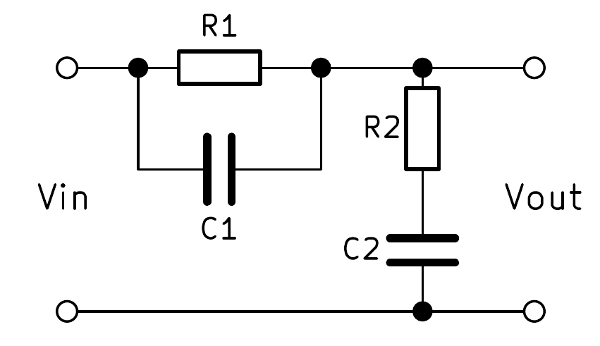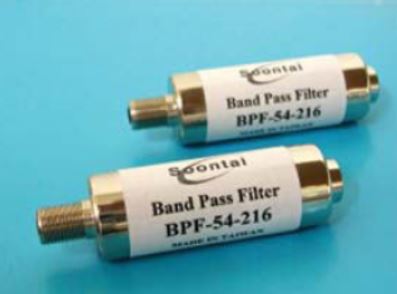Low-Pass RC Filter
A simple low-pass RC filter is shown in Figure (A). As stated earlier, it permits signals of low frequencies up to fc to pass through while attenuating frequencies above fc. The range of frequencies up to fc is called the passband of the filter. Figure (B) shows the frequency response curve of such a filter. It shows how the signal output voltage V0 varies with the signal frequency.
As seen at fc, output signal voltage is reduced to 70.7% of the input voltage. The output is said to be – 3 dB at fc. Signal outputs beyond fc roll-off or attenuate at a fixed rate of – 6 dB/octave or – 20 dB/decade. As seen from the frequency-phase response curve of Figure (C), the phase angle between V0 and Vi is 45° at cutoff frequency fc.
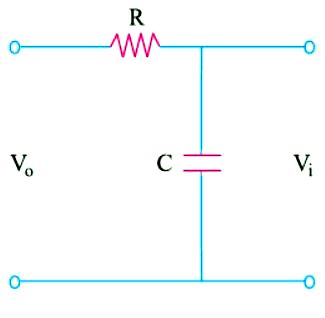
By definition cutoff frequency fc occurs where (a) V0 = 70.7% Vi i.e. V0 is – 3 dB down from Vi (b) R = Xc and VR = VC in magnitude. (c) The impedance phase angle θ = – 45°. The same is the angle between V0 and Vi.
AdBlock-2
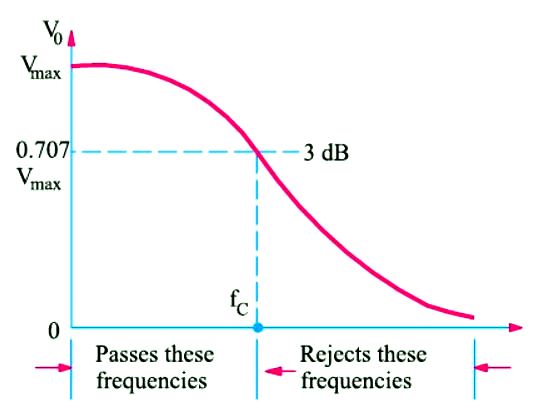
As seen, the output voltage is taken across the capacitor. Resistance R offers fixed opposition to frequencies but the reactance offered by capacitor C decreases with increase in frequency. Hence, low-frequency signal develops over C whereas high-frequency signals are grounded. Signal frequencies above fc develop negligible voltage across C. Since R and C are in series, we can find the low-frequency output voltage V0 developed across C by using the voltage-divider rule.
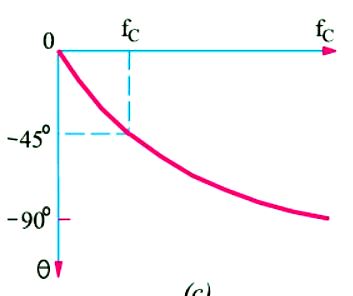
Other Types of Low-Pass Filters
There are many other types of low-pass filters in which instead of pure resistance, series chokes are commonly used along with capacitors.
(i) Inverted–L Type. It is shown in Figure (D). Here, inductive reactance of the choke blocks higher frequencies and C shorts them to ground. Hence, only low frequencies below fc (for which X is very low) are passed without significant attenuation.
(ii) T-Type. It is shown in Figure (E). In this case, a second choke is connected on the output side which improves the filtering action.

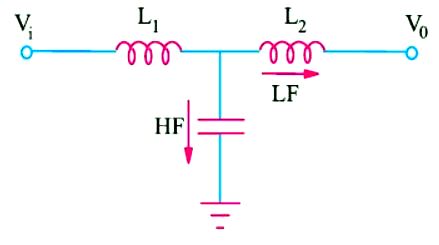

(iii) π-Type. It is shown in Figure (F). The additional capacitor further improves the filtering action by grounding higher frequencies.
It would be seen from the above figures that choke is always connected in series between the input and the output and capacitors are grounded in parallel. The output voltage is taken across the capacitor.
Read article – Plate type Capacitor
Visit NCERTplanet.com for NCERT solutions and Textbook downloads


